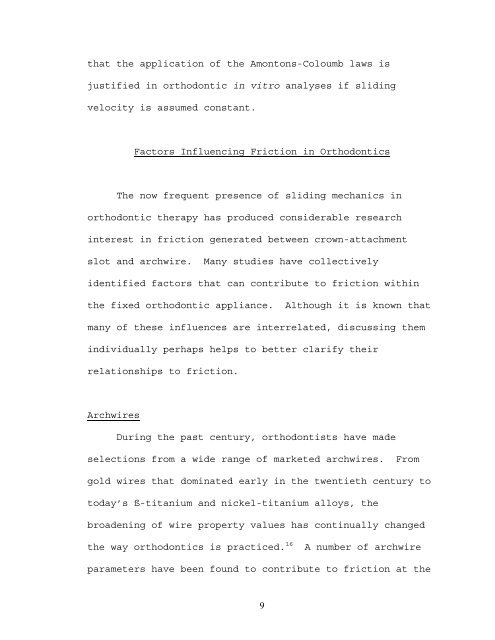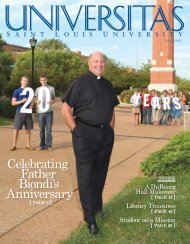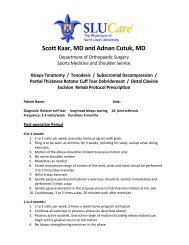The effects of third-order torque and self - Saint Louis University
The effects of third-order torque and self - Saint Louis University
The effects of third-order torque and self - Saint Louis University
You also want an ePaper? Increase the reach of your titles
YUMPU automatically turns print PDFs into web optimized ePapers that Google loves.
that the application <strong>of</strong> the Amontons-Coloumb laws is<br />
justified in orthodontic in vitro analyses if sliding<br />
velocity is assumed constant.<br />
Factors Influencing Friction in Orthodontics<br />
<strong>The</strong> now frequent presence <strong>of</strong> sliding mechanics in<br />
orthodontic therapy has produced considerable research<br />
interest in friction generated between crown-attachment<br />
slot <strong>and</strong> archwire. Many studies have collectively<br />
identified factors that can contribute to friction within<br />
the fixed orthodontic appliance. Although it is known that<br />
many <strong>of</strong> these influences are interrelated, discussing them<br />
individually perhaps helps to better clarify their<br />
relationships to friction.<br />
Archwires<br />
During the past century, orthodontists have made<br />
selections from a wide range <strong>of</strong> marketed archwires. From<br />
gold wires that dominated early in the twentieth century to<br />
today’s ß-titanium <strong>and</strong> nickel-titanium alloys, the<br />
broadening <strong>of</strong> wire property values has continually changed<br />
the way orthodontics is practiced. 16 A number <strong>of</strong> archwire<br />
parameters have been found to contribute to friction at the<br />
9
















